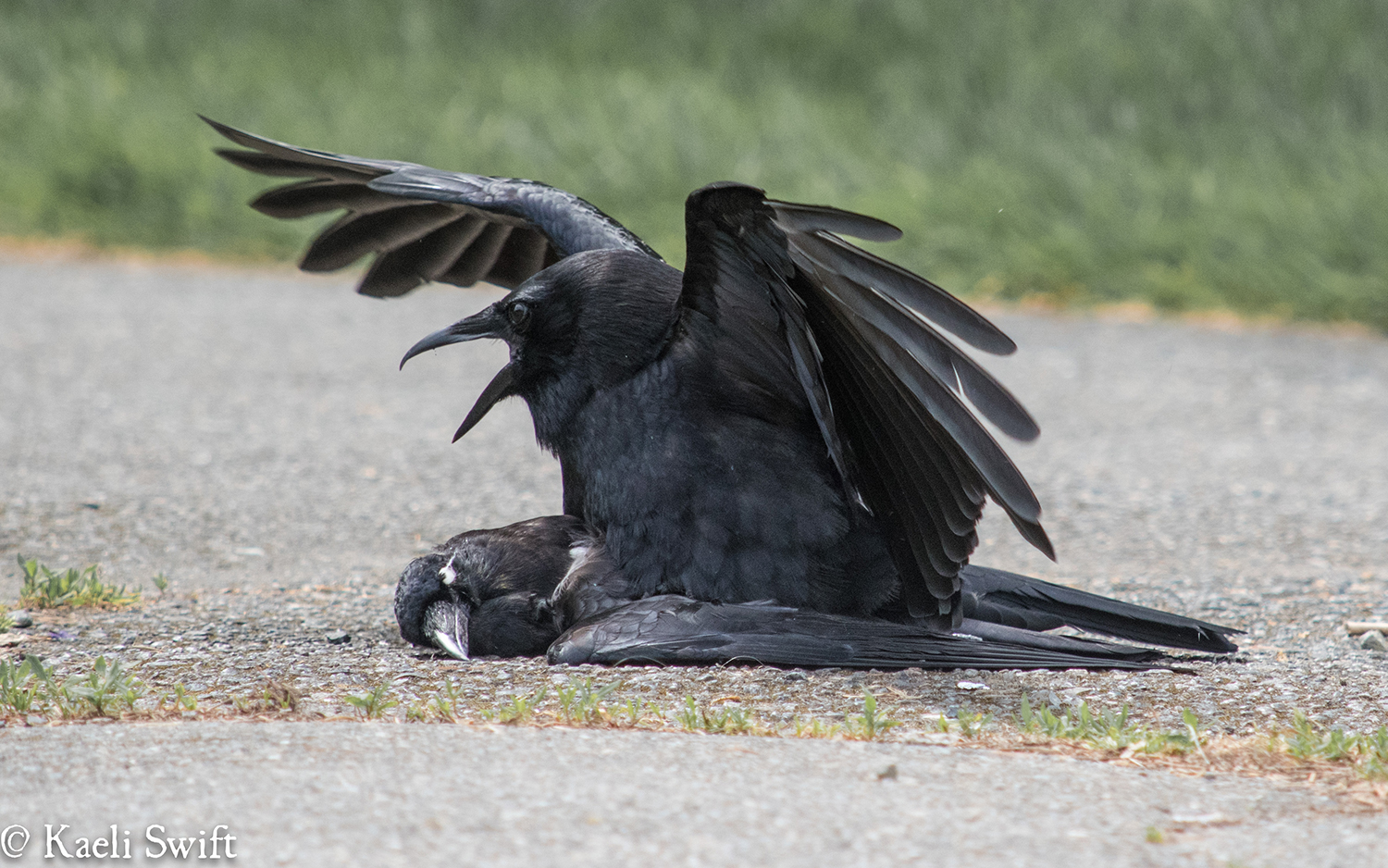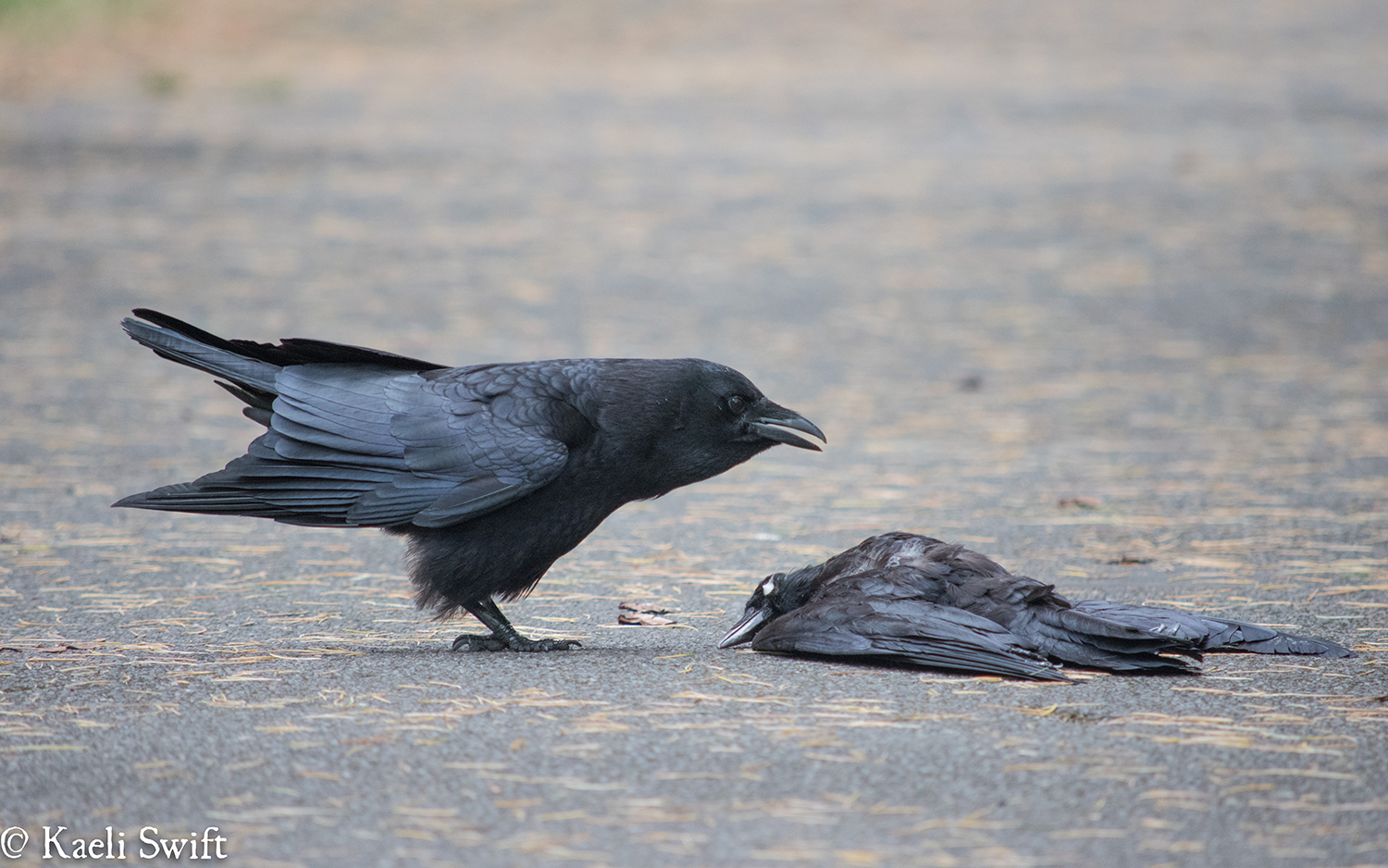Why Do Crows Copulate with Corpses?
Crows are highly social birds, and that bond continues even after death: Living crows often gather and caw loudly near the bodies of their fallen comrades.
Some of them, on occasion, go a bit further than that: They have sex with the corpses.
Crows are not alone in this peculiar predilection. Scientists have witnessed isolated examples of different types of animals — from ducks to dolphins — trying to copulate with deceased members of their own species. But scientists couldn't say how common that behavior is among species, which makes it difficult to explain why animals were doing it. [The 12 Weirdest Animal Discoveries]
However, a couple of researchers who study American crows (Corvus brachyrhynchos) now have some answers. They conducted the first-ever study to observe and document the practice of corpse copulation in crows — or in any land animals with backbones, for that matter. The goal? To determine how frequently it happens and to better understand what it means, lead study author Kaeli Swift told Live Science.
"Until now, it's not something that we've ever explored in a systematic way," Swift said.
Caws for alarm
Plenty of studies have documented crows' intelligence, from their puzzle-solving prowess and tool use to their ability to remember the faces of humans that threaten them. Other research has highlighted aspects of crows' social behavior, finding that groups of crows notice and react to the sight of their dead.
Swift, a doctoral candidate in the School of Environmental and Forest Sciences at the University of Washington (UW), was documenting a crow "funeral" in 2015, when she first observed some unusual sexual activity, Swift wrote in a blog post. At the time, she and John Marzluff, a UW professor of wildlife science and co-author of the new study, were investigating the birds' organized vocal responses to finding a dead crow, which signals a potential threat to the living, Swift told Live Science.
Sign up for the Live Science daily newsletter now
Get the world’s most fascinating discoveries delivered straight to your inbox.
And they saw something they had never observed before: A crow approached the corpse, mounted it and started "thrashing" in a manner that was immediately recognizable, Swift wrote on her blog.

Learning from the dead
In previous research into how crows gather and communicate around their dead, Swift and Marzluff found that the birds used dead crows to learn about and avoid potential risks. This made their discovery of the new crow behavior — having sex with the dead — extremely puzzling, Swift said. If a dead crow is a danger signal, why would a living crow want to get close to it?
"Engaging so closely with a dead conspecific [animal of the same species] could expose you to disease, or parasites, or scavengers," Swift said.
For the new study, the researchers conducted a series of experiments in four Washington cities, testing 308 mated pairs of wild crows. They exposed the birds to carefully positioned taxidermic crows — and to other prepared animal corpses, such as pigeons and squirrels — to see if the crows' responses were common to a range of dead things or if they were specific to their own species.

They found that the birds were more likely to caw in alarm when the corpse that they saw belonged to a crow, particularly if the stuffed crow was in a "dead" pose rather than a more lifelike posture. The birds approached dead crows about 25 percent of the time, but only 4 percent initiated sexual activity, hinting that corpse canoodling is not commonly practiced, the study authors reported.
"Clearly, most birds are not engaging in this behavior, and that suggests that there's probably some cost associated with it that makes it undesirable," Swift told Live Science.
Furthermore, the crows that mounted dead birds often demonstrated aggressive behaviors in addition to a sexual response. It's possible that the heightened stress of breeding season, combined with the sight of a dead crow, simply confuses some individuals, so they respond to a corpse with both aggression and sex, the researchers said. However, further research will be required to be able to say for sure what leads some birds to react this way, the scientists concluded.
The findings were published online June 16 in the journal Philosophical Transactions of the Royal Society B.
Original article on Live Science.

Mindy Weisberger is an editor at Scholastic and a former Live Science channel editor and senior writer. She has reported on general science, covering climate change, paleontology, biology and space. Mindy studied film at Columbia University; prior to Live Science she produced, wrote and directed media for the American Museum of Natural History in New York City. Her videos about dinosaurs, astrophysics, biodiversity and evolution appear in museums and science centers worldwide, earning awards such as the CINE Golden Eagle and the Communicator Award of Excellence. Her writing has also appeared in Scientific American, The Washington Post and How It Works Magazine. Her book "Rise of the Zombie Bugs: The Surprising Science of Parasitic Mind Control" will be published in spring 2025 by Johns Hopkins University Press.










